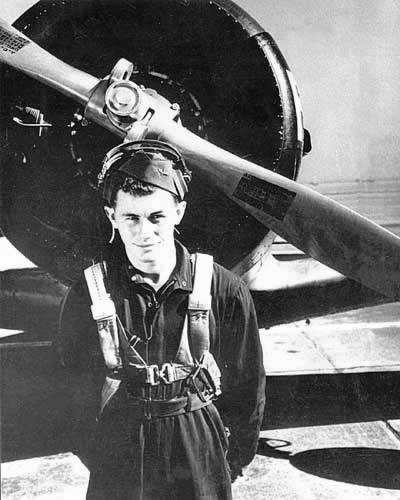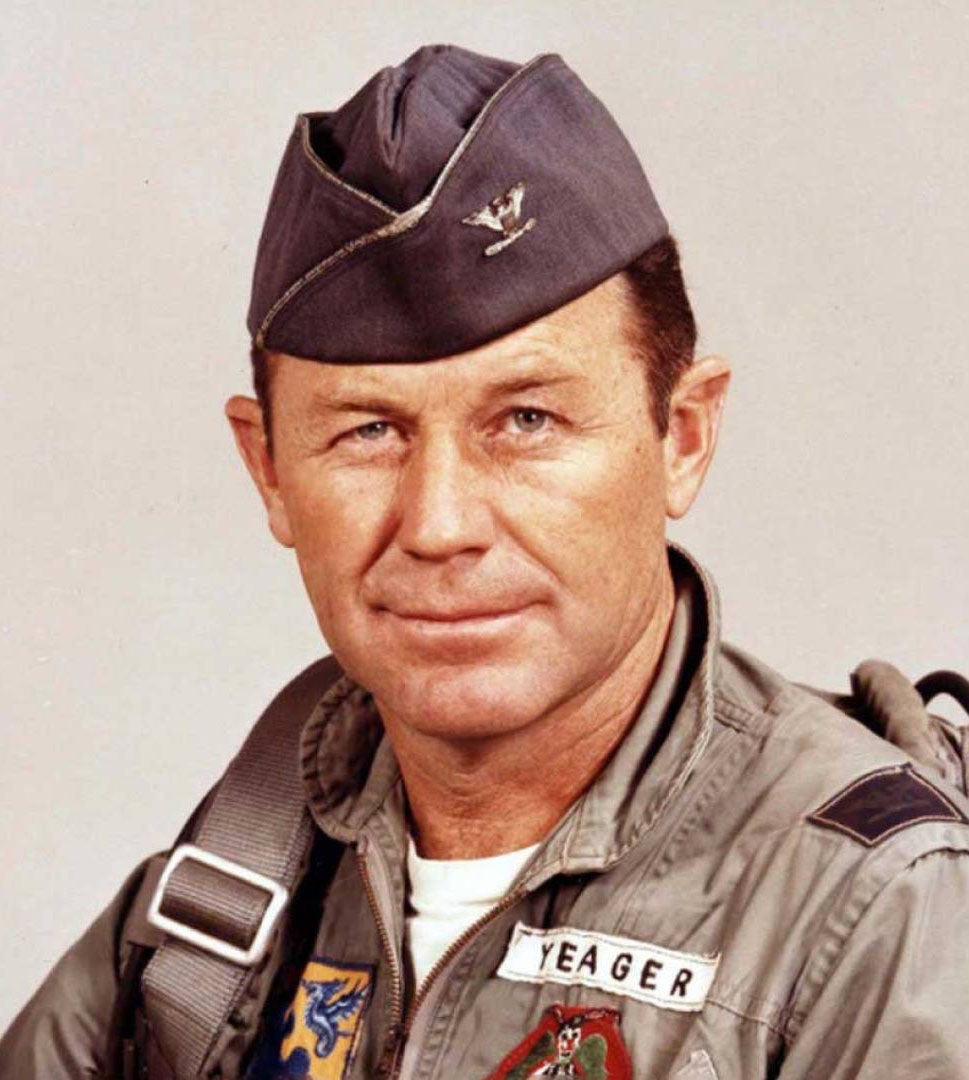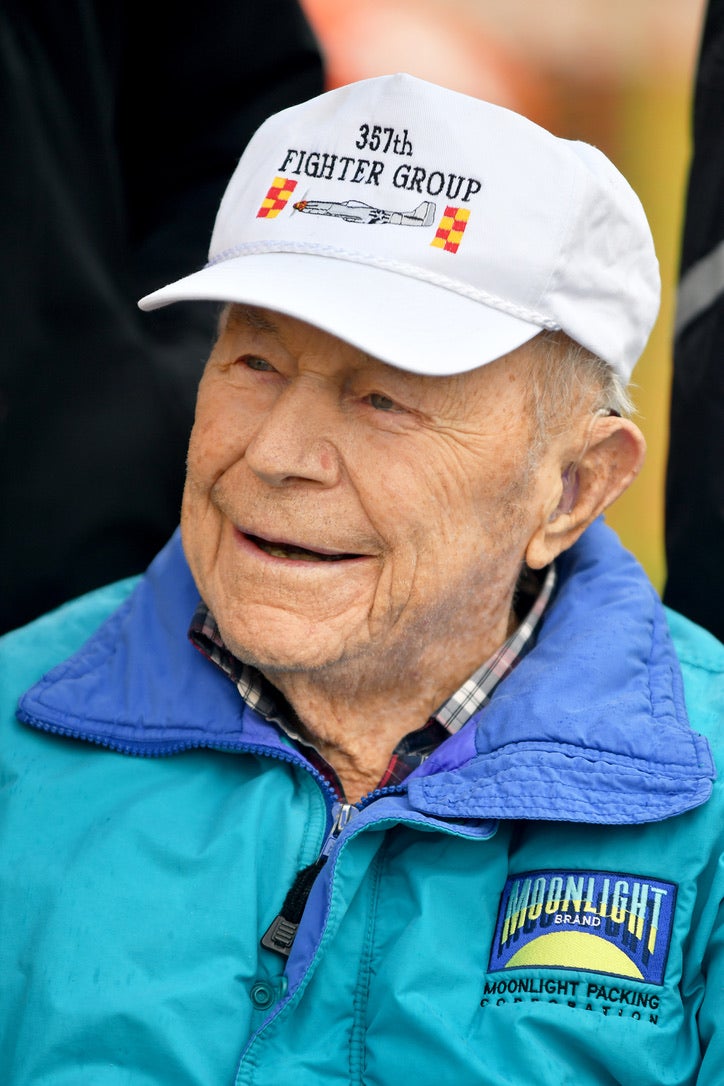
BG Charles “Chuck” Yeager (February 13, 1923 – December 7, 2020) was born in Myra, West Virginia and is a graduate of Hamlin, West Virginia High School.
He enlisted in the Army Air Corps in September 1941, was accepted for pilot training under the flying sergeant program in July 1942, and received his pilot wings and appointment as a flight officer in March 1943 at Luke Field, Arizona.
During World War II, General Yeager distinguished himself in aerial combat over France and Germany during the years 1943-1945 by shooting down 13 enemy aircraft, five on one mission, including one of Germany’s first jet fighters. On March 5, 1944 he was shot down over German-occupied France but escaped capture when elements of the French Marquis helped him to reach the safety of the Spanish border. Yeager later taught the Marquis how to put together and use plastic explosives to blow up bridges containing communication lines on D-Day. The lack of working communication lines aided the allies as the Germans didn’t receive word of the invasion for three weeks.
In what would later become the reason Yeager received a bronze star, the decorated pilot carried a wounded airman over the Pyrenees mountains in three inches of snow.
He returned to the United States in February 1945 to attend the instructor pilot course after which he served as an instructor pilot. In July 1945 he went to Wright Field, Ohio where he received his first taste of experimental flight test work. His assignment thee led to his selection as pilot of the nation’s first research rocket aircraft, the Bell X-1 at Edwards Air Force Base, California. General Yeager made world history on October 14, 1947, when he became the first man to fly faster than the speed of sound. During his nine-year assignment as the nation’s leading test pilot, he also became the first man to fly more than twice the speed of sound, flying the Bell X-IA on December 12, 1953.
During 1952 he attended the Air Command and Staff School. He returned to Europe in October 1954 and became Commander of the 417th Fighter Squadron at Hahn Air Base, Germany in May 1955. He remained in that position when his squadron was reassigned to Toul-Rosieres Air Base, France in April 1956. Upon his return to the United States in September 1957, he was assigned to the 413th Fighter Wing at George Air Force Base, Calif., and in April 1958 became Commander of the 1st Fighter Squadron. In April 1958 he went with the 1st Tactical Fighter Squadron to Moron Air Base, Spain, where he remained until November 1958.
He returned to George Air Force Base with the same unit which was later redesignated the 306th Tactical Fighter Squadron. General Yeager was graduated from the Air War College, Maxwell Air Force Base, Ala., in June 1961 and became Commandant of the Aerospace Research Pilot School, where all military astronauts are trained, in July 1962. In July 1966 he assumed command of the 405th Fighter Wing at Clark Air Base Republic of the -4- Philippines.

While Commander of the 405th Fighter Wing he flew 127 missions in South Vietnam. General Yeager assumed command of the 4th Tactical. Fighter Wing at Seymour Johnson Air Force Base, N. C., in February 1968 and went with the wing to Korea during the Pueblo crisis. In July 1969 he became Vice Commander, Seventeenth Air Force, with headquarters at Ramstein Air Base, Germany. In 1971-73 he was posted as an advisor to the Pakistan Air Force at the behest of Ambassador Joe Farland. In March of 1973 as USAF Director of Aerospace Safety at Norton AFB, CA. On 25 February 1975, he returned to Edwards AFB for his last official active duty flight in an F-4C Phantom II. He retired 28 Feb 1975 as a Brigadier General.
In 2004, Congress voted to authorize the President to promote Yeager to the rank of major general on the retired list. In 2005, President George W. Bush granted the promotion of Yeager. His military decorations include the Distinguished Service Medal, Silver Star with one oak leaf cluster (OLC), Legion of Merit with one OLC, Distinguished Flying Cross with two OLCs, Bronze Star Medal with “V” device, Air Medal with 10 OLCs, Air Force Commendation Medal, and Purple Heart.
He was a command pilot and flew more than 10,000 hours in 361 different makes and models of military aircraft all over the world. He was awarded the MacKay Trophy in 1948, the Collier Trophy in 1948, and the Harmon International Trophy in 1954. General Yeager was awarded an honorary doctor of science degree from West Virginia University in 1948 and an honorary doctor of science degree from Marshall University of Huntington, W. Va., in 1969. General Yeager was married to Glennis Faye Dickhouse of Grass Valley, Calif. They had two sons, Donald C. and Michael D., and two daughters, Mrs. Sharon C. (Steven) Wren and Susan F. Yeager. Glennis Yeager died in 1990. General Yeager married Victoria Scott D’Angelo in August 2003.


